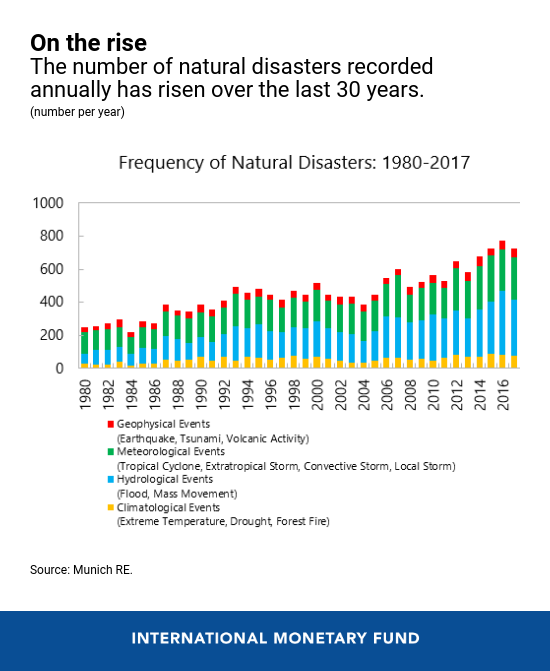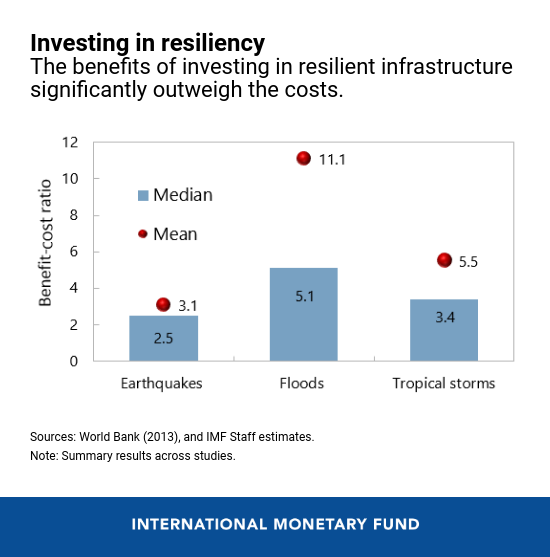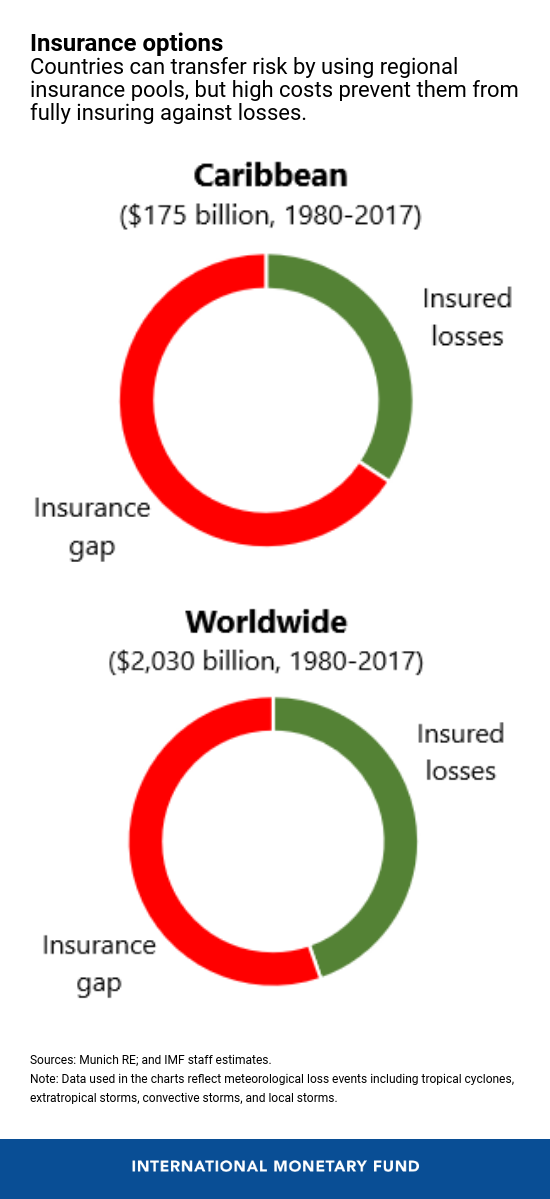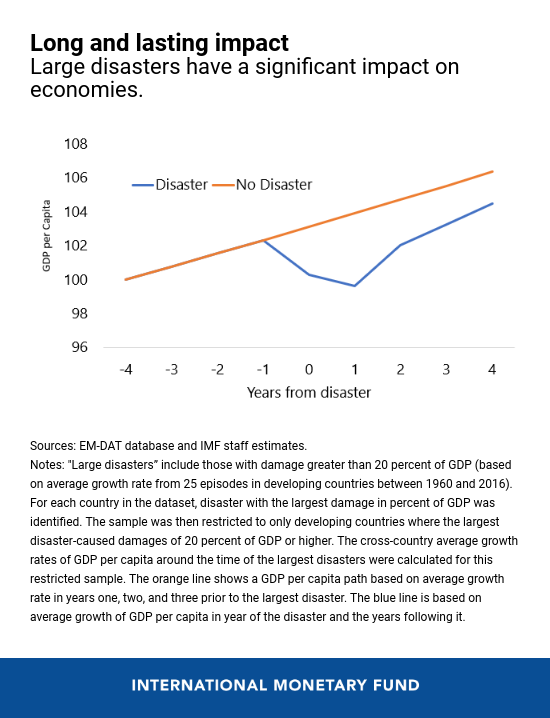Earlier this year, Cyclone Idai devastated Mozambique, Malawi, and Zimbabwe by leaving more than 1,000 people dead, thousands more missing, and damages in the billions. These storms were among the recent reminders of how natural disasters can cause severe and catastrophic damage. Natural disasters destroy lives and property and have large and lasting effects on economies by reducing production and increasing debt burdens. They also tend to disproportionately affect the poor, who have a limited ability to cope with the impact.
Although not alone, the small island countries in the Caribbean and Pacific are particularly vulnerable to natural disasters. They have suffered, on average, disaster-related losses of 2 to 3 percent of GDP per year over the past 30 years. Some countries have been hit far harder: when Hurricane Maria ravaged Dominica in 2017, it caused damages estimated at some 220 percent of GDP—more than twice the island’s entire annual production.
As climate change continues to affect both the frequency and severity of natural disasters, how can vulnerable countries do more to prepare and cope with their consequences?
In a new IMF paper, we outline how vulnerable countries can develop comprehensive strategies to build their resilience to disasters, based on a diagnosis of risks and cost-effective responses. Having such a strategy can also help countries attract much-needed support from the international community.
Disaster resilience strategies can draw on existing disaster response plans, supplemented by specialist expertise from development partners, and need to be based on three complementary pillars of building resilience:
- Structural resilience. Many vulnerable countries lack disaster-resilient infrastructure covering vital services such as water, sewer, and electricity—even though investment in such infrastructure can have very high returns. A key obstacle is high up-front capital costs: the joint IMF-World Bank Climate Change Policy Assessments for Belize, Seychelles, and Saint Lucia estimated that annual investments of 2 to 3 percent of GDP would be required for a full decade to achieve adequate protection. But high public debt levels constrain many countries from making the needed infrastructure investments. They can still build resilience—think of enforcing strong building codes and zoning rules or improving early warning systems.

- Financial resilience. The impact of disasters can be contained, but not eliminated. Planning for emergency financing needs for reconstruction must take place before a disaster strikes. One option is to make provisions in the budget, possibly in the form of a dedicated saving fund to meet disaster needs. Another is using contingency-based financial instruments that provide insurance coverage or relief from debt service payments when a disaster strikes. But regional financial markets are often insufficiently developed to provide these financing options at a reasonable cost, particularly for small countries. For example, while there are regional insurance pools like the Caribbean Catastrophe Risk Insurance Facility and the Pacific Catastrophe Risk Insurance Company, countries have sought limited coverage from them, reflecting the high costs involved. They need help to reduce these costs.

- Social resilience. Scaling up structural and financial resilience will take time. This makes it imperative that countries put in place detailed emergency response plans to contain disruptions to critical public services after a disaster strikes—such as water, electricity, medical services, and security—and to limit the impact on the most vulnerable.
Formulating a disaster resilience strategy would help a country identify the areas where it’s most vulnerable and provide a road map to build resilience. The strategy needs to be grounded in strong diagnostics—including risk assessments, project identification, prioritization, and costing—and build on, rather than displace, existing response plans. Once in place, the strategy can help the country catalyze support from the international community.
Countries can develop comprehensive strategies to build their resilience to disasters.
Support crucial for success
Many small and low-income countries need external support—both expertise and financial assistance—to flesh out and implement a strategy. For this, all stakeholders need to chip in.
Countries themselves should raise additional domestic revenues by re-prioritizing spending and strengthening financial management. This would give incentives to external donors to provide more grants and concessional financing. Climate funds and other climate finance initiatives are also a promising avenue to obtain support, but many countries will need technical support to engage effectively with these funds.
The IMF can help countries by analyzing financing options and recommending ways to build disaster-resilience into medium-term fiscal and macroeconomic frameworks to ensure that public finances remain sustainable.
The IMF also has emergency lending facilities designed to provide speedy assistance to low-income countries hit by disasters—we disbursed more than $100 million to Mozambique less than a month after Cyclone Idai hit. And we also help build capacity within governments through training and technical assistance to help them better manage disaster risks and responses. We can, and will, do more to support countries—who face rising disaster risks as climate change intensifies.
Related Links:
Getting Real on Meeting Paris Climate Change Commitments
5 Things You Need to Know About the IMF and Climate Change







